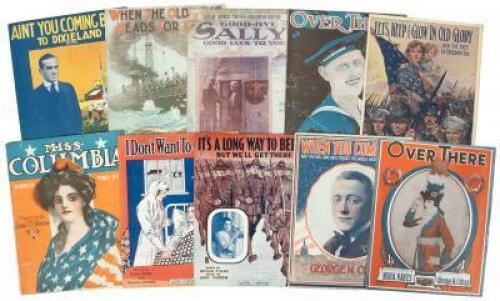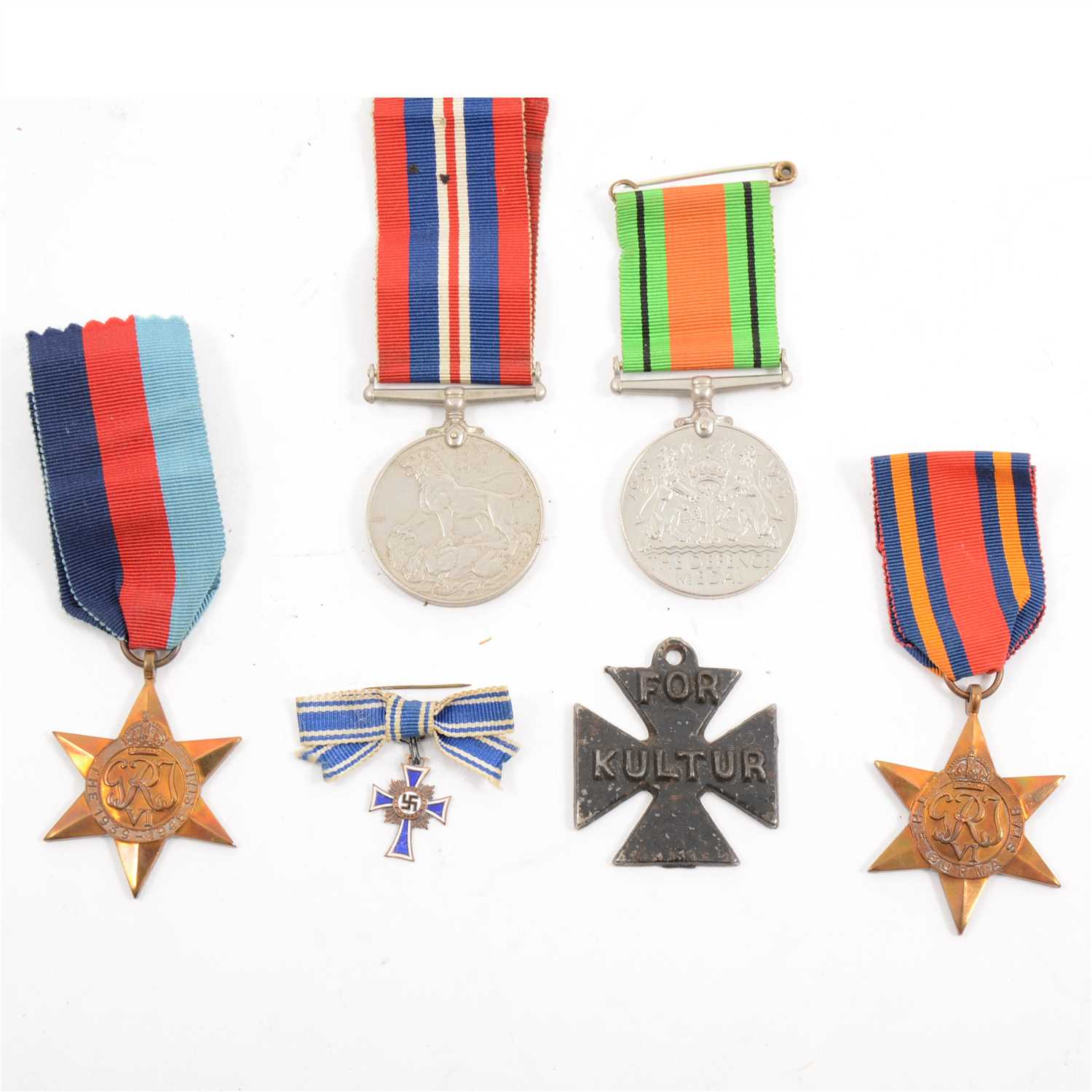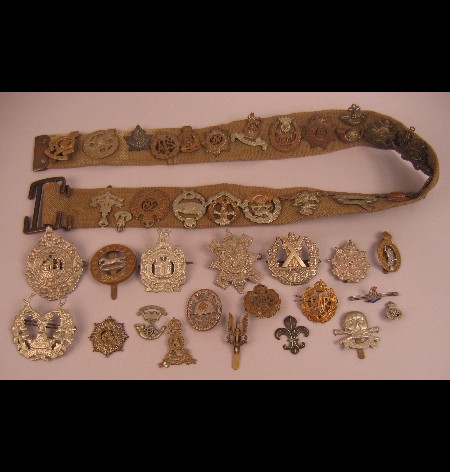Sheet music, Judge, Jack and Williams, Harry. It's a Long, Long Way to Tipperary. New York & Toronto: Chappell & Co., Ltd. Cover with colored soldier in military kilt. The song was reportedly written in a single evening on a 5-shilling bet and performed in a theater the following evening. Daily Mail correspondent George Curnock saw the Connaught Rangers singing this wile marching in France early in WWI. He reported it in his column, and, before one knew it, many other British units were singing it. It has been suggested that, interestingly, much of the popular music during this war differed from previous ones. Earlier conflicts saw more warlike songs of heroic deeds (songs like GarryOwen in the Civil War). WWI saw more songs expressing a longing for home, like this and "Keep the Home Fires Burning." The first scrapbook is 9 x 11 in, with string-tied spine. It is identified to George Bakewell, 2nd Lieut., 1st Mo Field Artillery, Battery D, and dated May 12, 1919. Much of the book contains newspaper clippings about the return of the 128th Field Artillery to St. Louis, and the parade planned for them. There was even some controversy surrounding the unit. The Governor of Kansas criticised the Missouri Artillery unit for not providing proper support for the Missouri and Kansas troops caught in the Argonne forest. To this the artillery men replied that they could not reach the infantry, since the engineers had not completed the road so they could move their large guns into place. The infantry moved ahead much faster than the engineers could get the artillery moved. Most articles from April and May 1919. Second scrapbook is in a "Melink Safes" book, 8 x 10 in. This one contains many images from magazines, many of Belgian children and Red Cross canteens and fund drive leaflets. Some of the photographs are incredible, such as the one of the entrance to the Amiens Cathedral with sand bags piled about 20 feet up on the front. A number of images show refugees fleeing with everything they can pile on carts, Armenian, Belgins; there are prison camps and a captured German U-boat; Belgian children clutching toys given to them by the Red Cross at Christmas, after over two years of war. Still other images show duck-and-cover air raid drills in London schools. Soldiers at the Hague are stationed on the sidewalks to prevent food riots, and much more. Both scrapbooks have additional clippings in the back that did not get mounted in a notebook. Also included is a group of 64 postcards, all black-&-white. Most with French captions, although a few have captioning in both French and English. Many (maybe the majority) show bombed out buildings; one shows the beginning of a trench near a small village. The first part of the twentieth century was the "heyday" of postcards. People collected them wherever they traveled, soldiers included. Provenance: The Alan Culpin Collection of World War I Art Condition: Variable, newspapers toned and a bit brittle as expected.
Sheet music, Judge, Jack and Williams, Harry. It's a Long, Long Way to Tipperary. New York & Toronto: Chappell & Co., Ltd. Cover with colored soldier in military kilt. The song was reportedly written in a single evening on a 5-shilling bet and performed in a theater the following evening. Daily Mail correspondent George Curnock saw the Connaught Rangers singing this wile marching in France early in WWI. He reported it in his column, and, before one knew it, many other British units were singing it. It has been suggested that, interestingly, much of the popular music during this war differed from previous ones. Earlier conflicts saw more warlike songs of heroic deeds (songs like GarryOwen in the Civil War). WWI saw more songs expressing a longing for home, like this and "Keep the Home Fires Burning." The first scrapbook is 9 x 11 in, with string-tied spine. It is identified to George Bakewell, 2nd Lieut., 1st Mo Field Artillery, Battery D, and dated May 12, 1919. Much of the book contains newspaper clippings about the return of the 128th Field Artillery to St. Louis, and the parade planned for them. There was even some controversy surrounding the unit. The Governor of Kansas criticised the Missouri Artillery unit for not providing proper support for the Missouri and Kansas troops caught in the Argonne forest. To this the artillery men replied that they could not reach the infantry, since the engineers had not completed the road so they could move their large guns into place. The infantry moved ahead much faster than the engineers could get the artillery moved. Most articles from April and May 1919. Second scrapbook is in a "Melink Safes" book, 8 x 10 in. This one contains many images from magazines, many of Belgian children and Red Cross canteens and fund drive leaflets. Some of the photographs are incredible, such as the one of the entrance to the Amiens Cathedral with sand bags piled about 20 feet up on the front. A number of images show refugees fleeing with everything they can pile on carts, Armenian, Belgins; there are prison camps and a captured German U-boat; Belgian children clutching toys given to them by the Red Cross at Christmas, after over two years of war. Still other images show duck-and-cover air raid drills in London schools. Soldiers at the Hague are stationed on the sidewalks to prevent food riots, and much more. Both scrapbooks have additional clippings in the back that did not get mounted in a notebook. Also included is a group of 64 postcards, all black-&-white. Most with French captions, although a few have captioning in both French and English. Many (maybe the majority) show bombed out buildings; one shows the beginning of a trench near a small village. The first part of the twentieth century was the "heyday" of postcards. People collected them wherever they traveled, soldiers included. Provenance: The Alan Culpin Collection of World War I Art Condition: Variable, newspapers toned and a bit brittle as expected.














Try LotSearch and its premium features for 7 days - without any costs!
Be notified automatically about new items in upcoming auctions.
Create an alert